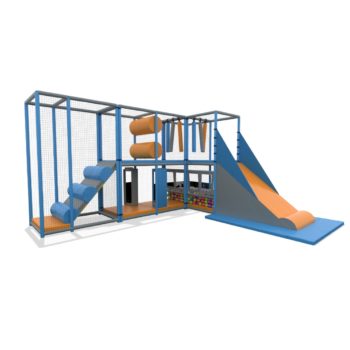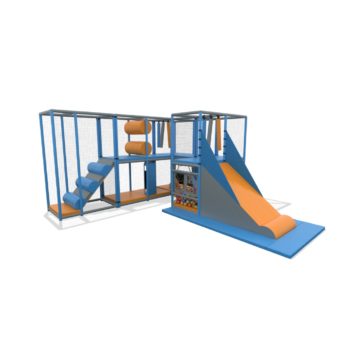Soft Play
Are children getting enough free playtime with one another?
We for one do not think they are and it appears we are not alone in this thinking.
Research
Peter Gray, a research professor at Boston College, recently published two qualitative reviews in the American Journal of Play that bring the issue to light.
Gray argues that a lack of free play – and fewer opportunities for children of different ages to mix – could be responsible for an increase of health issues among today’s children and adolescents. Gray’s research showed that since the 1950s, children have spent less time playing freely with each other outside. During the same period, anxiety and depression increased among children and teens.
Free play differs from other types of activities in that it’s not directed or led by adults. Creating rules to follow as well as being sensitive to others playing are skills children probably don’t gain firsthand by playing adult-led sports or watching TV. Instead, they learn these skills from informal interactions with each other. And as Gray notes, there’s a lot at stake because children don’t want to alienate potential playmates. After all, what’s the fun of playing a game if no one wants to join? It’s this ability to strike an emotional balance with others — a type of tactful self-control — that renders free play so valuable. And it’s been known that children best exercise these skills during play with friends and peers. Free play also promotes egalitarianism, Gray writes, which may help children understand the value of others and shy away from developing narcissistic attitudes.
Simply put, the very act of free play brings joy to children.
Yet parents’ careful planning of kids’ activities may account for why 85 percent of children today report higher levels of depression and anxiety than their same-aged counterparts did in the 1950s. Youth simply aren’t reaping the benefits of play, which may negatively affect their adult life, Gray argues. Gray also writes that who your child plays with should gain some consideration. In humans’ evolutionary history, children have mostly played with siblings or peers of different ages, which contrasts with how children are grouped in school and play environments today. Though few studies examine age-mixed play, a handful suggests the activity has a positive effect on both older and younger participants.
For instance, one analysis studied 2-year-olds and 5-year-olds as they played with their own age groups and then when they mixed. It turns out the 5-year-olds not only behaved as creatively with the 2-year-olds when compared to their same-aged peers, but they also provided the younger kids with props and easy instructions to participate more. Gray argues these interactions expand the cognitive boundaries of play for youngsters and reinforce leadership and empathetic qualities for older children. Also, neither sees the other as a competitor or authority figure, which makes age-mixed play different from games with same-aged peers or adults. Learning by observation is a key area too. In one observation, Gray recalls when an older child helped a younger one by advising her to “…give seven drops of medicine – no more or less – to a sick doll.” The interaction turned into a math lesson the younger child would not have got from children of the same age. Though free play still rests in the hands of parents, administrators, and educators, perhaps it’s time we loosen up a little and encourage our children to play freely with one another, whether it be outside at the local park or inside at the local indoor play centre.


